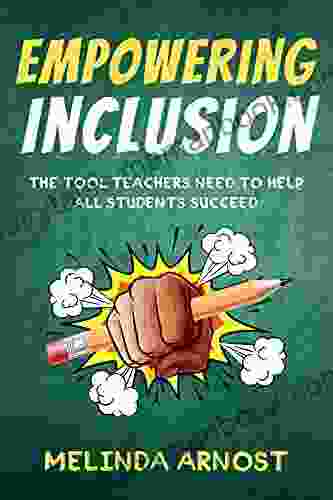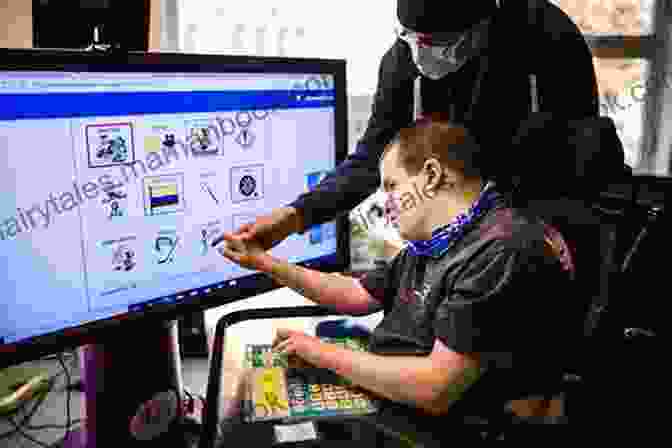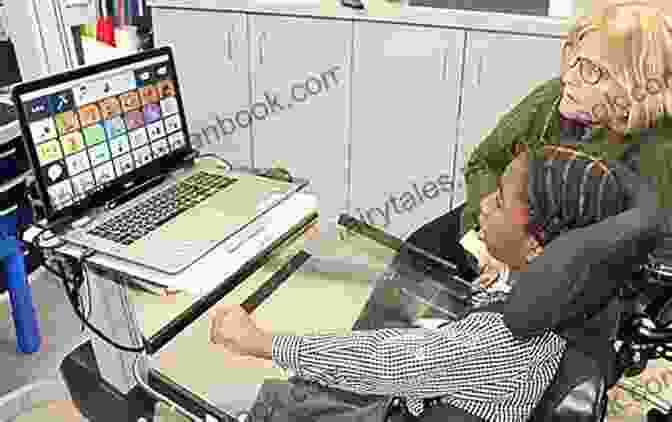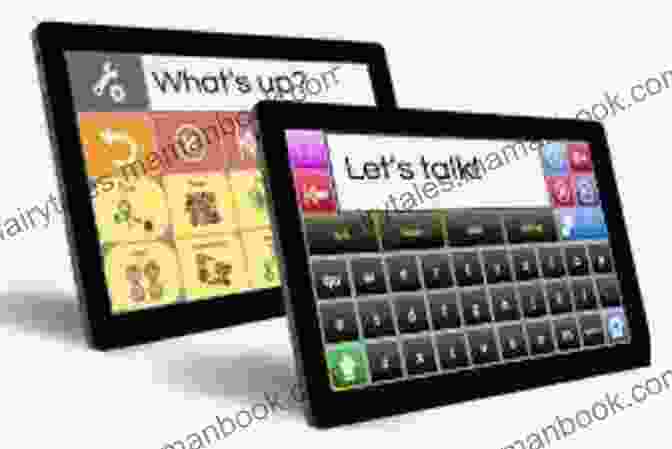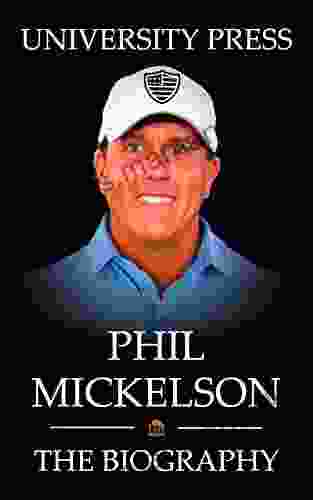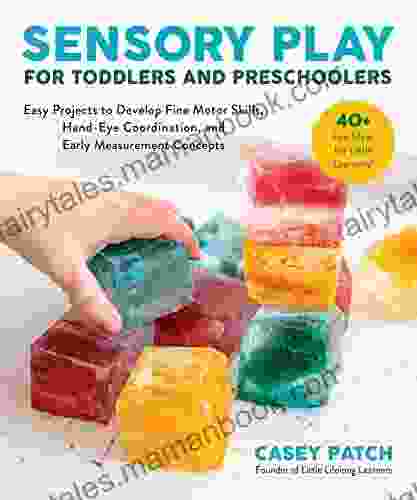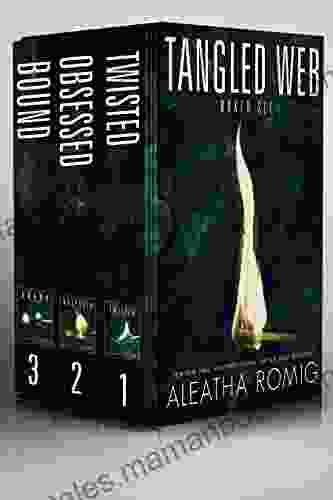The Tool Teachers Need To Help All Students Succeed: A Comprehensive Guide to Assistive Technology

:
Education is a fundamental right for all students, regardless of their abilities or disabilities. In today's classrooms, assistive technology (AT) plays a critical role in leveling the playing field and ensuring that all students have the opportunity to reach their full potential.
5 out of 5
| Language | : | English |
| File size | : | 2085 KB |
| Text-to-Speech | : | Enabled |
| Screen Reader | : | Supported |
| Enhanced typesetting | : | Enabled |
| Word Wise | : | Enabled |
| Print length | : | 214 pages |
| Lending | : | Enabled |
| Paperback | : | 256 pages |
| Item Weight | : | 14.9 ounces |
AT refers to any device or system that enhances, maintains, or improves a student's functional capabilities. It can range from simple accommodations like audiobooks to sophisticated software that provides multiple access points to learning materials.
This article will serve as a comprehensive guide to AT, exploring its types, benefits, challenges, and implementation strategies. By understanding the power of AT, teachers can create inclusive learning environments that empower all students to succeed.
Types of Assistive Technology:
AT encompasses a vast array of tools and devices designed to meet the diverse needs of students. Some common types include:
- Augmentative and Alternative Communication (AAC) devices: These devices allow students with speech impairments to communicate effectively.
- Computer-Aided Instruction (CAI): CAI software provides individualized learning experiences, allowing students to work at their own pace and receive tailored feedback.
- Environmental Controls: These devices enable students with physical disabilities to access and control their environment, such as lights, switches, and doors.
- Mobility Devices: Wheelchairs, walkers, and canes help students with mobility impairments move freely within the classroom and participate in activities.
- Sensory Aids: Tools like headphones, magnifiers, and tactile maps enhance sensory perceptions for students with visual, auditory, or tactile impairments.
Benefits of Assistive Technology:
AT offers numerous benefits for students, including:
- Increased Access to Learning: AT provides alternative pathways to access educational content, making learning accessible for all students.
- Improved Communication: AAC devices empower students with communication impairments to express themselves and participate in classroom discussions.
- Enhanced Independence: AT can reduce or eliminate physical barriers, giving students greater independence and self-confidence.
- Tailored Support: AI-powered AT can identify and address individual learning needs, providing targeted support and feedback.
- Empowerment: AT fosters a sense of empowerment among students, enabling them to actively engage in their own learning and succeed alongside their peers.
Challenges in Implementing Assistive Technology:
Despite its transformative potential, AT implementation can face certain challenges:
- Cost: Some AT devices can be expensive, requiring significant investment from schools and families.
- Training: Teachers and students need adequate training to use AT effectively, which can be time-consuming and resource-intensive.
- Compatibility: AT devices may not always be compatible with existing software and infrastructure, leading to accessibility issues.
- Lack of Awareness: There may be a lack of awareness among educators and policymakers about the importance and availability of AT.
- Stigma: Some students may be hesitant to use AT due to perceived stigma or negative attitudes.
Strategies for Successful Implementation:
To successfully implement AT in the classroom, educators should consider the following strategies:
- Early Identification: Identify students who may benefit from AT through assessments and observations.
- Individualized Assessments: Conduct thorough assessments to determine the specific AT needs and preferences of each student.
- Collaboration: Collaborate with occupational therapists, speech-language pathologists, and other specialists to develop appropriate AT plans.
- Training and Support: Provide ongoing training and support for teachers and students to ensure effective AT use.
- Advocacy and Funding: Advocate for necessary funding and resources to support AT implementation.
- Universal Design for Learning: Implement Universal Design for Learning (UDL) principles to create inclusive learning environments that accommodate diverse learning needs.
- Cultural Sensitivity: Consider the cultural and linguistic backgrounds of students when selecting and using AT.
:
Assistive technology is an essential tool for creating equitable and inclusive learning environments. By embracing AT, teachers can unlock the potential of all students, empowering them to achieve academic success and participate fully in the learning process.
As technology continues to evolve, new and innovative AT solutions will emerge, providing even greater opportunities for students with disabilities. By staying informed and advocating for AT implementation, educators can ensure that all students have the tools they need to succeed.
Image Alt Attributes:
5 out of 5
| Language | : | English |
| File size | : | 2085 KB |
| Text-to-Speech | : | Enabled |
| Screen Reader | : | Supported |
| Enhanced typesetting | : | Enabled |
| Word Wise | : | Enabled |
| Print length | : | 214 pages |
| Lending | : | Enabled |
| Paperback | : | 256 pages |
| Item Weight | : | 14.9 ounces |
Do you want to contribute by writing guest posts on this blog?
Please contact us and send us a resume of previous articles that you have written.
 Top Book
Top Book Novel
Novel Fiction
Fiction Nonfiction
Nonfiction Literature
Literature Paperback
Paperback Hardcover
Hardcover E-book
E-book Audiobook
Audiobook Bestseller
Bestseller Classic
Classic Mystery
Mystery Thriller
Thriller Romance
Romance Fantasy
Fantasy Science Fiction
Science Fiction Biography
Biography Memoir
Memoir Autobiography
Autobiography Poetry
Poetry Drama
Drama Historical Fiction
Historical Fiction Self-help
Self-help Young Adult
Young Adult Childrens Books
Childrens Books Graphic Novel
Graphic Novel Anthology
Anthology Series
Series Encyclopedia
Encyclopedia Reference
Reference Guidebook
Guidebook Textbook
Textbook Workbook
Workbook Journal
Journal Diary
Diary Manuscript
Manuscript Folio
Folio Pulp Fiction
Pulp Fiction Short Stories
Short Stories Fairy Tales
Fairy Tales Fables
Fables Mythology
Mythology Philosophy
Philosophy Religion
Religion Spirituality
Spirituality Essays
Essays Critique
Critique Commentary
Commentary Glossary
Glossary Bibliography
Bibliography Index
Index Table of Contents
Table of Contents Preface
Preface Introduction
Introduction Foreword
Foreword Afterword
Afterword Appendices
Appendices Annotations
Annotations Footnotes
Footnotes Epilogue
Epilogue Prologue
Prologue Judith Martinovich
Judith Martinovich Joanna Gaines
Joanna Gaines The Vintage House Publication
The Vintage House Publication Mark Seal
Mark Seal Win Scott Eckert
Win Scott Eckert Akira Toriyama
Akira Toriyama Lucy Worsley
Lucy Worsley Arthur Rimbaud
Arthur Rimbaud Val Bianco
Val Bianco Philip Gibbs
Philip Gibbs David Bohlke
David Bohlke Tony Healey
Tony Healey Mark Doty
Mark Doty Ron Adner
Ron Adner Salam Khan
Salam Khan Emily Meggett
Emily Meggett Thomas Bulfinch
Thomas Bulfinch America S Test Kitchen
America S Test Kitchen Ditter Kellen
Ditter Kellen Dr Velma Bagby
Dr Velma Bagby
Light bulbAdvertise smarter! Our strategic ad space ensures maximum exposure. Reserve your spot today!

 Demetrius CarterA Tale of Love and Miracle: Delving into the Enthralling World of Great Manga...
Demetrius CarterA Tale of Love and Miracle: Delving into the Enthralling World of Great Manga... Harvey BellFollow ·4.1k
Harvey BellFollow ·4.1k Jared PowellFollow ·11.5k
Jared PowellFollow ·11.5k Robert HeinleinFollow ·9.5k
Robert HeinleinFollow ·9.5k Marcel ProustFollow ·4.7k
Marcel ProustFollow ·4.7k Darren BlairFollow ·19k
Darren BlairFollow ·19k Fletcher MitchellFollow ·11.2k
Fletcher MitchellFollow ·11.2k Brayden ReedFollow ·7.4k
Brayden ReedFollow ·7.4k Mark MitchellFollow ·7.7k
Mark MitchellFollow ·7.7k

 Edwin Cox
Edwin CoxThe Great Deliverance Inspector Lynley: A Literary...
: In the realm of detective fiction,...

 Christian Carter
Christian CarterMetal Gear Solid Ground Zeroes Guide, Walkthrough, Tips,...
Metal Gear Solid...

 Branden Simmons
Branden SimmonsYellow Green: Not an Autobiography of Marcy Chen
Yellow Green:...

 Edward Reed
Edward ReedPurple Orchids: An Artistic Tale of Two Sisters in the...
Prologue: A Legacy Unveiled In the...

 Earl Williams
Earl WilliamsThe Evolving Housing Market Dynamics in Africa:...
The African housing market is a...

 William Faulkner
William FaulknerVoices In My Head: A Cerebral Symphony of Terror
In the labyrinthine...
5 out of 5
| Language | : | English |
| File size | : | 2085 KB |
| Text-to-Speech | : | Enabled |
| Screen Reader | : | Supported |
| Enhanced typesetting | : | Enabled |
| Word Wise | : | Enabled |
| Print length | : | 214 pages |
| Lending | : | Enabled |
| Paperback | : | 256 pages |
| Item Weight | : | 14.9 ounces |


